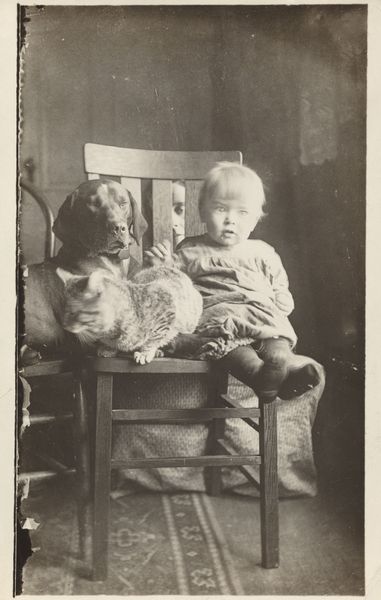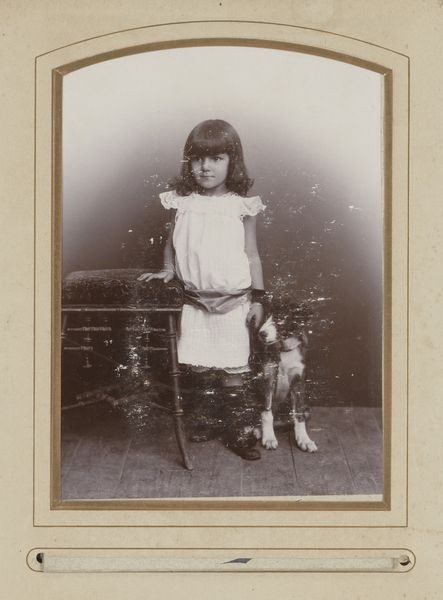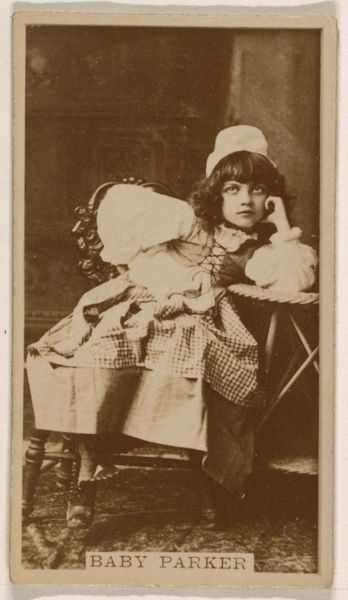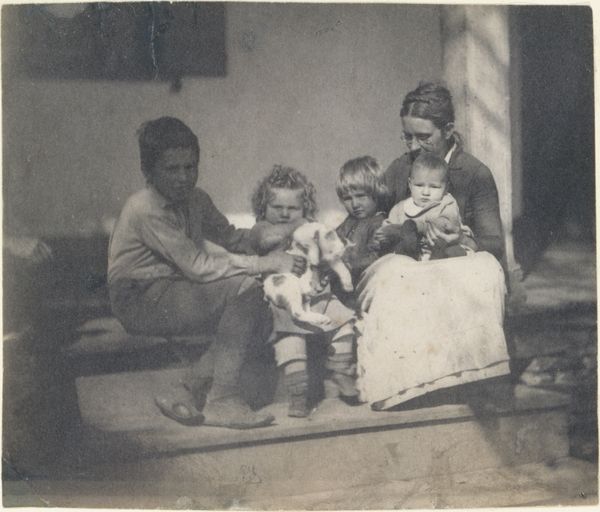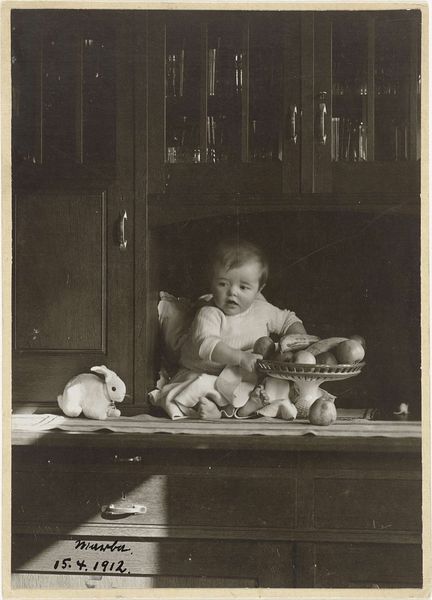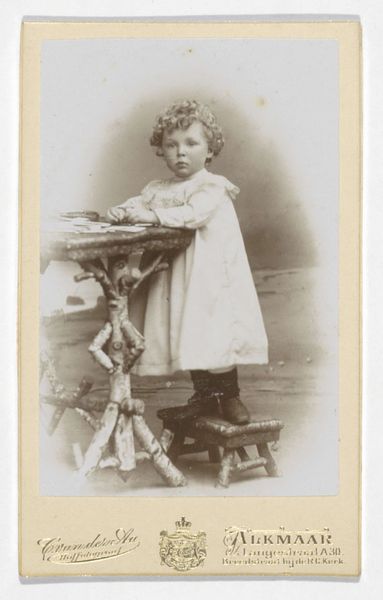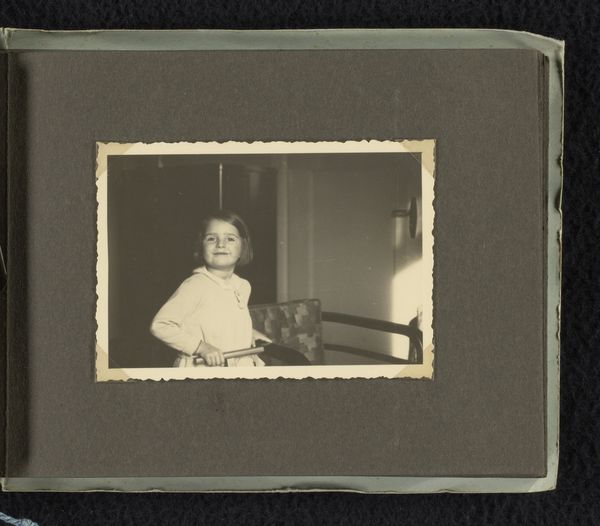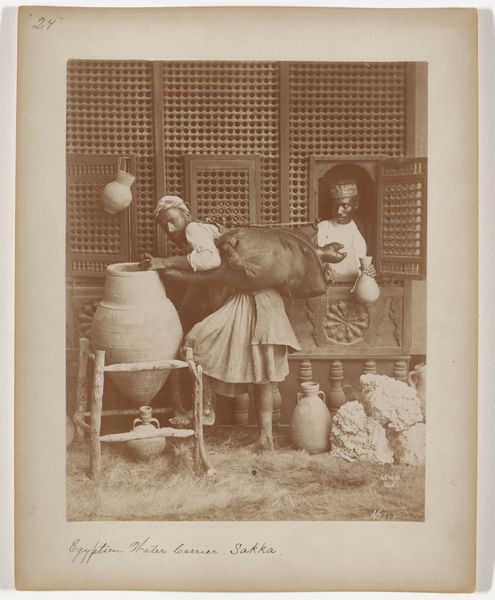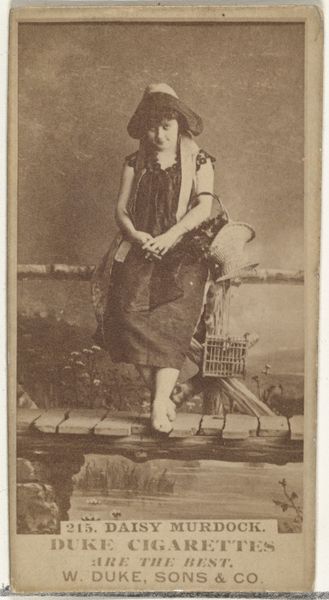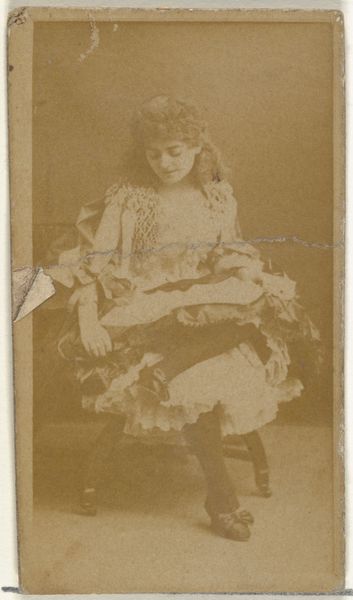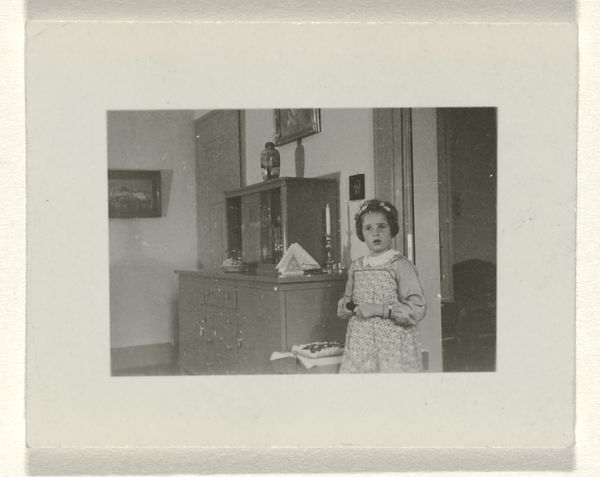
Marba Titzenthaler, dochter van de fotograaf, met haar speelgoed in het woonhuis in de Friedrichsstrasse, Berlijn Possibly 1914 - 1917
0:00
0:00
photography, gelatin-silver-print
#
portrait
#
print photography
#
still-life-photography
#
archive photography
#
photography
#
historical photography
#
gelatin-silver-print
Dimensions: height 99 mm, width 100 mm, height 114 mm, width 149 mm
Copyright: Rijks Museum: Open Domain
Curator: Oh, this gelatin-silver print. It's a poignant piece attributed to Waldemar Titzenthaler, possibly taken between 1914 and 1917. It’s titled "Marba Titzenthaler, daughter of the photographer, with her toys in the house in Friedrichstrasse, Berlin." Editor: It strikes me as both innocent and unsettling. So many playthings amassed around this little girl. Is that melancholy I see in her eyes, or is it simply the gravity of sitting still for a portrait? Curator: I think you've nailed it—a complex mixture of both. Titzenthaler's composition emphasizes the materiality of childhood—the dolls, the stuffed animals, even a miniature stroller. The very *stuff* of a privileged upbringing, perhaps. I am struck at how arranged and deliberate the photograph appears, how little it resembles childhood 'play'. Editor: The toys themselves betray a kind of social coding. Mass-produced items mimicking adult life—the stroller, toy stove—alongside hand-crafted items, suggesting both industrialization and enduring traditions. Where did Titzenthaler acquire this assortment of childhood consumer goods? I wonder what material networks enabled the acquisition, manufacture and purchasing power that underpin such an image. It certainly feels in keeping with archive photography, in terms of subject matter. Curator: And isn't there a disquieting echo of still-life painting? Arranged, composed, not truly *alive*. The objects aren't engaged in, they simply 'are' there for presentation. Even Marba herself, framed by all these inanimate things, is she part of the arrangement? There's something spectral here. The gaze and expression are certainly not in keeping with modern commercial portrait photography and could easily fall into the art photography subgenre. Editor: Yes, her direct stare feels more posed, less engaged. The socio-economic implications are dense. This abundance exists at a particular historical juncture. Wartime scarcity was approaching. Curator: Indeed. Gazing at Marba, and all her treasures... It sparks something akin to longing, but tainted with premonition. There is more here than meets the eye. Editor: Absolutely. Beyond surface sentimentality, a material and historical critique awaits.
Comments
No comments
Be the first to comment and join the conversation on the ultimate creative platform.
